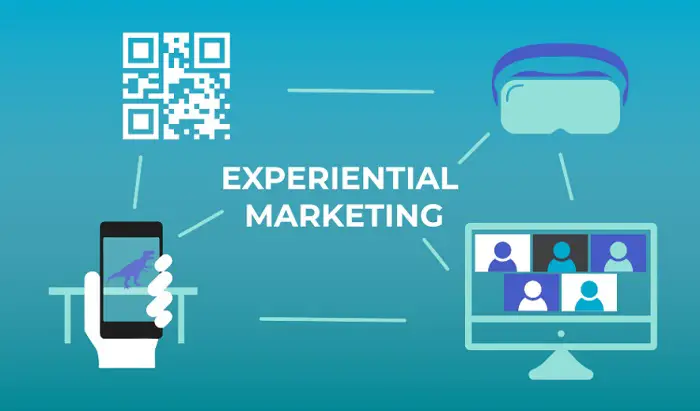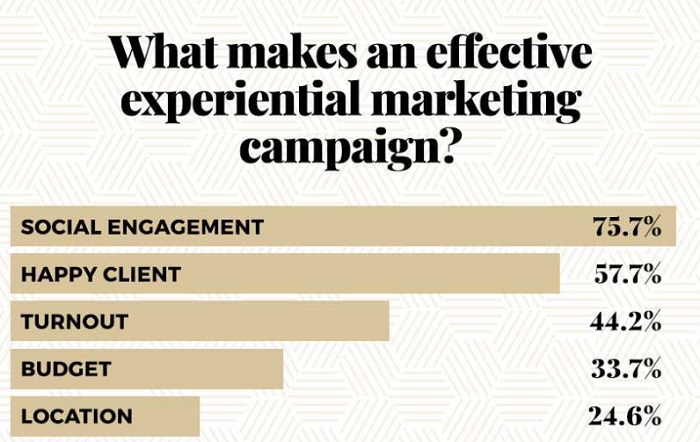Over the years, in the world of marketing, a unique strategy was introduced, and it was called Experiential Marketing. What is Experiential Marketing? It is a strategy with special functions, such as having a memorable impact on its customers. We will now look at everything about this strategy in this article.
Experiential Marketing is an approach that engages with customers through a hands-on and unique experience. Several brands use this marketing strategy due to its realistic and participatory experiences’ significant impact on the customers.
As a result, this helps build loyalty, a sense of confidence, and brand awareness among the customers in ways that the traditional methods or strategies might not be able to extend. Let us look at what Experiential Marketing is all about.
Importance of Experiential Marketing
Experiential marketing is more than a mere economic incentive or a paid advertisement. It is a strategy in which people can be a part of and experience the product or service provided and not merely view it as an audience.
In a market full of various products and services, the need to stand out and reach out to customers is challenging.
Therefore, this marketing method is quite different from traditional marketing strategies, and similarly, it helps connect with customers on multiple levels.
Types of Experiential Marketing approaches
There are four significant types of experiential marketing approaches:
Event marketing
This technique includes creating awareness by presenting or depicting the brand to give customers a personal and memorable experience, emphasizing the importance of understanding the difference between Event Marketing and Sports Marketing.
By recognizing the distinctions between these two approaches, marketers can tailor their strategies more effectively to engage audiences and achieve desired outcomes.
Brand Activation
This type of campaign comprises connecting the brands with the customers in a highly personalized manner. It includes interaction with customers to encourage them to act.
Retail installations
Pop marketing offers an amusing opportunity to potential consumers. It refers to promoting products by placing them in retail stores by taking up some of their physical space.
Guerrilla marketing
This type of campaign mainly revolves around the ‘surprise’ element, and it focuses on unconventional methods and helps draw the attention and interest of the target customers.
See also – What is Mass Marketing? How is it beneficial?
How to Create an Experiential Marketing Campaign?
1. Determine your audience base
Understanding the customer base and identifying their expectations is very important. This, however, does not imply restricting to only a fixed group of people but means that clarity in this aspect is of high significance.
2. Set your Goals
The end goal and periodic goals, i.e., the long-term and short-term goals, must be precisely fixed, and they must be unambiguous, along with being realistic.
3. Establish KPIs
Measuring your Key Performance Indicators (KPIs) and obtaining the required data, like customer feedback while campaigning, is essential.
4. Communicate with the Customers
Next, ensuring the message is conveyed to the customers in the intended way is essential.
5. Fix a Budget
As said earlier, a good campaign does not imply an unrealistic one. Considering all the available resources and the ability to obtain more, you must create a budget.
6. Devise a Multi-Channel Campaign
Especially considering the rapid pace of changes around us, you must ensure that your strategy does not restrict to physical campaigning alone. Reaching out to customers through various modes of media also makes a considerable impact.
7. Encourage Customers to Circulate Information
This refers to promoting your brand in a way that the customers share information, pictures, or videos of the event or the brand. This word-of-mouth promotion will contribute majorly to growth and improve customer relations.
Pros and Cons of Experiential Marketing
| Pros | Cons |
|---|---|
| A unique experience involving personal touch resulting in an immersive experience. | There is a high degree of uncertainty. i.e., the risk of something going wrong is high at such proximity. |
| It makes the experience memorable and last longer. | Uncertainty also prevails due to the unpredictability of human reactions. |
| It helps increase brand awareness. | Recovery from one such failure is very challenging. |
| It makes connecting with customers easier. | It would help if you used this strategy sparingly. |
| Builds trust and credibility among customers. | Measuring the Return on Investment is more challenging. |
FAQs
What are the 5 Cs of experiential marketing?
A: The 5 C's are Customers, Company, Collaborators, Climate, and Competitors.
What type of marketing is experiential marketing?
A: Experiential marketing is physical/face-to-face marketing that involves creating brand awareness among customers using a realistic experience.
What are the 11 pillars of experiential marketing?
A: The 11 pillars are memorable, relatable, remarkable, relevant, personal, special, relatable, memorable, relevant, unique, credible, targetable, connectable, engagement-worthy, and adaptable marketing strategies.
What are examples of Experiential Marketing?
A: For instance, workshops, award shows, ceremonies, business events, and festivals are some examples of Experiential Marketing.
Conclusion
Therefore, Experiential Marketing is a thoughtful combination of online and offline platforms. As a result, it helps spread the word more impactful, increases loyalty, and creates brand awareness. In conclusion, it improves relations with customers on a grand scale. However, it also has a few drawbacks that can help businesses grow massively if dealt with tactfully.
Also, learn about Proximity Marketing.




